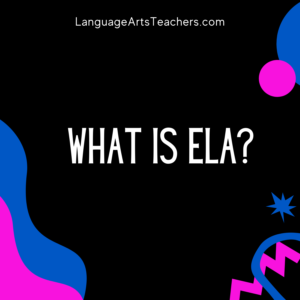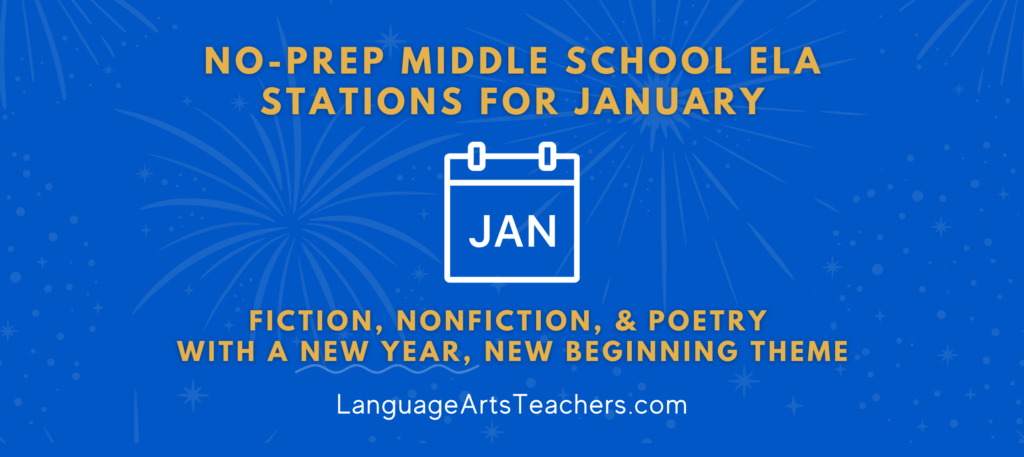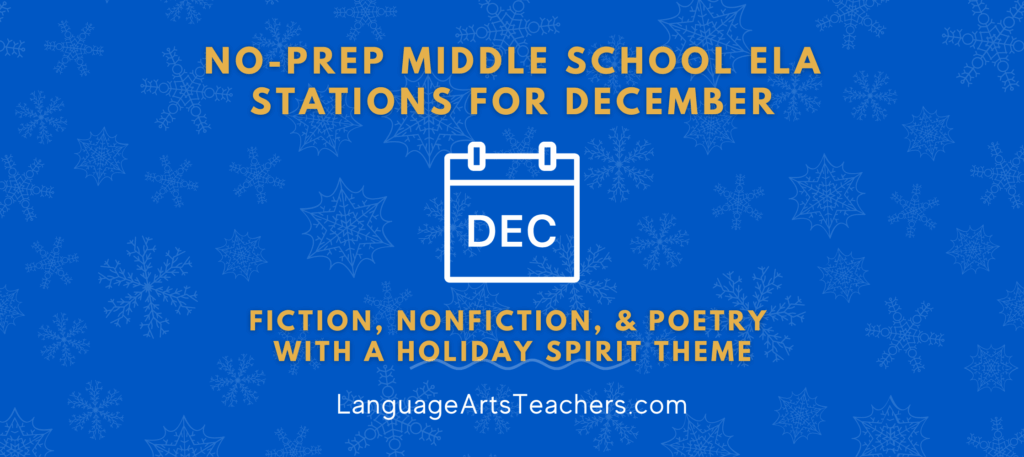What is ELA? Well, for starters, it might help if I instead asked, “What does ELA mean to you?”
You might be surprised to know that what you refer to as ELA might not be how a teacher from another state defines it. There are (very!) diverse opinions about this topic.
The reason this is so important is that when ELA teachers across the nation get together to support and help each other, sometimes their definitions of ELA are vastly different… But, really, it’s not that there’s a “right” or “wrong” way to view ELA—there are just different interpretations.
So my goal with this blog post is to unpack those various meanings. Hopefully, after reading this, you’ll be able to understand what teachers around the country think of when they talk about ELA.
ELA as a Comprehensive English/Language Arts Class
Some people refer to ELA as a class involving reading, writing, grammar, spelling, and so on… It’s a comprehensive English class involving many different aspects of communication.
That’s why some people use English and ELA interchangeably. To many of us, it’s the same class involving the same teachings and standards!
Because of this, I have many people in my ELA Teacher Membership who call themselves English teachers. They use my lesson plans for their English classes without a problem (even though my lesson plans are listed as ELA).
On the flipside… I have some ELA teachers join my membership and wonder why my lesson plans involve what they think should belong in English classes.
So let’s unpack that perspective!
English and ELA as 2 Separate Classes
For some teachers (like the ones I just mentioned), English and ELA are NOT the same thing—not at all!!!
In fact, if you use the terms English and ELA interchangeably, those teachers will get very confused. After all, to them, those are two entirely separate classes.
In this view, English covers the reading and writing aspects of language. It involves teaching students how to appreciate literature, how to write well, and how to improve their reading comprehension.
If you asked these teachers, “What is ELA?” they would tell you that it covers more of the nuts and bolts of writing and grammar. Think grammar rules, spelling, vocabulary, and similar subjects…
So when someone talks about teaching their ELA class how to understand literature, you can understand why some teachers might get confused.

Who Determines What ELA Is?
You might wonder if the answer to “What is ELA?” depends on region or culture. But in my experience, people’s varied interpretations of ELA depend entirely on the school district where they work (or sometimes the state).
In some cases, it could be a matter of how the school wants to divvy up their budget or how many teachers they have available. (It might be easier to have one ELA class that covers everything as opposed to separate English and ELA classes that cover different things…)
That means a school’s interpretation of ELA can change and fluctuate! So it really depends on how they define it.
For instance, one teacher in my Middle School ELA Teachers Community FB group (click here to join!) says that her district used to only have English classes. Then, they simply renamed the English class ELA and incorporated a few more grammar/writing exercises. By simply changing the name of the class, they shifted the definition of English and ELA in their school.
Crazy, right??
So What Is ELA … Really?
Since the definition of ELA depends entirely on the school district, it’s important that we understand the diverse meanings when talking to other ELA teachers.
You might only need to teach your students grammar and spelling while another ELA teacher you’re chatting with might need to teach literature. Hopefully understanding these differences will help you be a better support to your fellow middle school ELA teachers!
Stop feeling like you have to choose between prepping for class and enjoying family time by clicking the button below to grab several weeks of free bell-to-bell lesson plans for 6th, 7th, and 8th grade.




